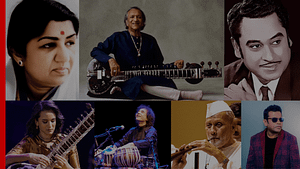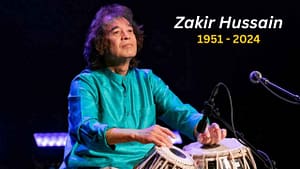Mastering Indian Classical Singing: Essential Tips for Beginners and Enthusiasts
Mastering Indian Classical Singing Essential Tips for Beginners and Enthusiasts :

Indian classical music, with its rich history and intricate techniques, offers a fascinating world for vocalists. Rooted in the traditions of ragas (melodic frameworks) and taals (rhythmic cycles), Indian classical singing is an art form that requires both technical skill and emotional depth. Whether you are a beginner or an experienced singer, mastering Indian classical music takes patience, dedication, and a deep understanding of its principles. Here are some key tips to help you unlock your potential as an Indian classical vocalist.
1. Understanding the Basics: The Foundation of Indian Classical Singing
Indian classical singing is based on two primary systems: Hindustani (North Indian classical music) and Carnatic (South Indian classical music). Each system has its own unique approach, but both emphasize ragas and talas as their core elements. Before diving into advanced techniques, it’s essential to understand the fundamentals:
- Raga: A raga is a melodic structure that evokes specific emotions or moods. There are hundreds of ragas, each associated with different times of the day or seasons.
- Tala: A tala is the rhythmic cycle used to structure the performance of a raga. There are various talas, such as Teentaal (16 beats), Dadra (6 beats), and Ektaal (12 beats), which guide the rhythm of the music.
2. Start with Raag and Taal Practice
To become proficient in Indian classical singing, you must first familiarize yourself with a few basic ragas and talas. The practice of these will help you build a solid foundation.
Tips:
- Begin with simple ragas: If you’re a beginner, start with ragas like Yaman or Bhairav that have a straightforward structure. These ragas will introduce you to the concept of swaras (musical notes) and help you build an ear for Indian classical music.
- Learn the talas: Start with simple talas such as Teentaal and Dadra. Understanding the rhythm cycles will make it easier for you to keep time and perform intricate rhythms.
3. Voice Training: Building Strength and Flexibility
The human voice is an instrument that needs continuous practice and conditioning, especially for Indian classical singing. The voice must be trained for both power and control to navigate the wide range of notes and pitches required in ragas.
Tips:
- Practice regular Sargam: Sargam refers to the vocalization of the notes of a raga (Sa, Re, Ga, Ma, Pa, Dha, Ni). Start by singing the notes of a scale in ascending and descending order. This will help you strengthen your vocal cords and expand your range.
- Focus on vocal exercises: Regular taans (rapid sequences of notes) and alankars (ornamented patterns) can help develop agility in your voice, allowing you to perform complex musical phrases smoothly.
- Work on your breath control: Indian classical singing relies heavily on controlled breathing. Regular practice of breath exercises like pranayama can increase your lung capacity and improve the steadiness of your voice.
4. Mastering Alaap and Taan Techniques
Indian classical singing includes improvisation, and the two most important techniques are Alaap and Taan. These are often the highlights of a classical performance and showcase a singer’s mastery over the raga.
- Alaap: This is the slow, unaccompanied introduction to a raga, where the singer explores the raga in depth, establishing its mood and tonal quality. It’s often done in a free rhythm before transitioning to a more structured tempo.
Tip: Start by practicing Alaap slowly and focusing on the accurate rendition of the notes. Gradually, as you become more comfortable with the raga, speed up your Alaap while maintaining clarity.
- Taan: Taan refers to fast, intricate runs of notes that are used to add flair and demonstrate vocal dexterity. Taan requires precise control and quick transitions between notes.
Tip: Begin by singing taans slowly, breaking them down into smaller phrases before speeding them up. Focus on maintaining accuracy even at higher speeds.
5. Work on Microtonal Adjustments: The Beauty of Shruti
One of the defining features of Indian classical music is its use of shruti—the microtones or subtle pitch variations between the standard notes in Western music. Unlike the Western scale, Indian classical music has a system of 12 semi-tones within an octave, with many ragas requiring singers to focus on smaller intervals to bring out the true essence of the music.
Tip: Use a tanpura (a drone instrument) during practice to help you stay in tune with the microtones. Listening carefully to the drone will allow you to adjust your pitch to the subtle nuances of the raga.
6. Embody the Emotional Expression: Raga and Bhava
Indian classical music is deeply connected with emotions. Each raga is intended to evoke a specific feeling or atmosphere. Mastery of Indian classical singing goes beyond technique; it’s about feeling the raga and transmitting its emotion to the audience.
Tips:
- Understand the emotional essence of the raga: Each raga is associated with a particular mood or time of day. For example, Raga Hamsadhwani evokes joy and celebration, while Raga Darbari brings a sense of solemnity and grandeur. Before singing a raga, take time to understand its emotional impact.
- Express through your voice: Don’t just focus on hitting the right notes—imbue your performance with emotion. Experiment with dynamics (loud and soft) and tempo to evoke the intended mood of the raga.
7. Learn from the Masters: Study Classical Performances
Listening to established classical singers is an invaluable learning experience. Masters like Ustad Bade Ghulam Ali Khan, Lata Mangeshkar (for semi-classical), Pandit Bhimsen Joshi, and Kishori Amonkar have set the bar for Indian classical music, and their recordings can offer immense insight into techniques and emotional delivery.
Tip: Listen to live concerts or recordings of classical performances, paying attention to how these masters treat each raga and tala. Try to replicate their techniques, but don’t forget to bring your unique expression into your performance.
8. Discipline and Consistency: The Key to Progress
The road to mastering Indian classical singing is not an easy one. It requires consistent practice and a disciplined approach. Whether you practice for 30 minutes or several hours, the key is to make practice a regular part of your routine.
Tip: Set aside dedicated time each day for your practice. Indian classical singing demands patience, so be prepared to invest time and effort into refining your technique.
9. Seek Professional Guidance
While self-practice is crucial, the guidance of an experienced teacher or guru can significantly accelerate your learning process. A teacher will not only help you correct mistakes but will also provide valuable insights into nuances that you might miss during solo practice.
Tip: Look for a qualified teacher who specializes in the style of classical singing you are interested in. Regular one-on-one lessons will help you progress faster and more efficiently.
Indian classical singing is a timeless art form that blends technique, expression, and emotion. By mastering the fundamentals of raga, tala, breath control, and improvisation, you can develop a voice that’s both powerful and nuanced. Remember, consistent practice, patience, and dedication are the keys to success in this intricate and rewarding tradition. Whether you’re just beginning your journey or you’re refining your craft, embrace the beauty of Indian classical music, and let it guide you toward your vocal mastery.




